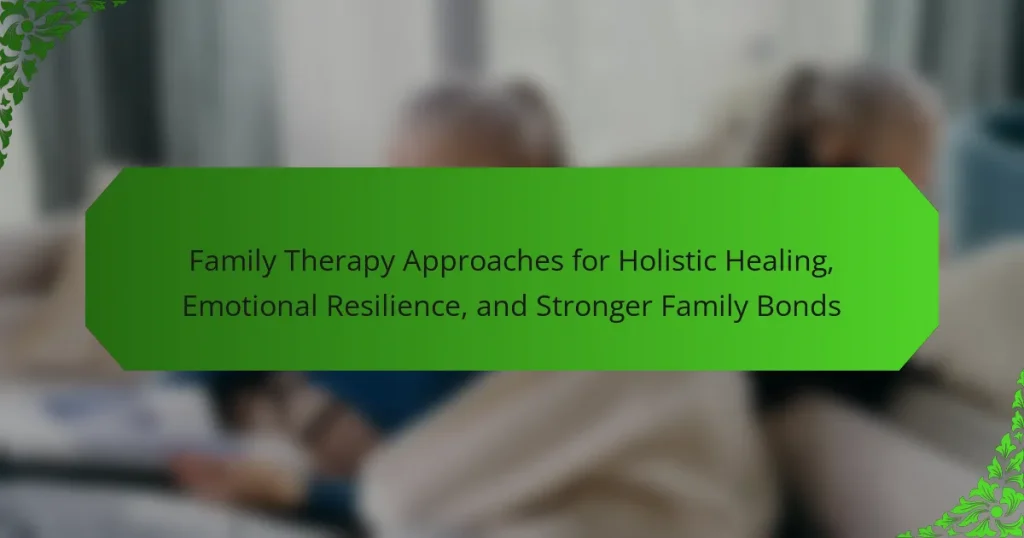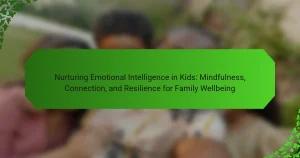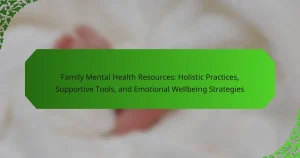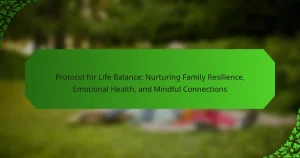Family therapy approaches enhance emotional resilience and strengthen family bonds. Key methods include systemic therapy for family dynamics, narrative therapy for storytelling, and cognitive behavioral therapy for changing negative thoughts. Art therapy promotes emotional expression, while mindfulness practices improve emotional regulation. These strategies foster healthier communication and conflict resolution skills, contributing to holistic healing within families.
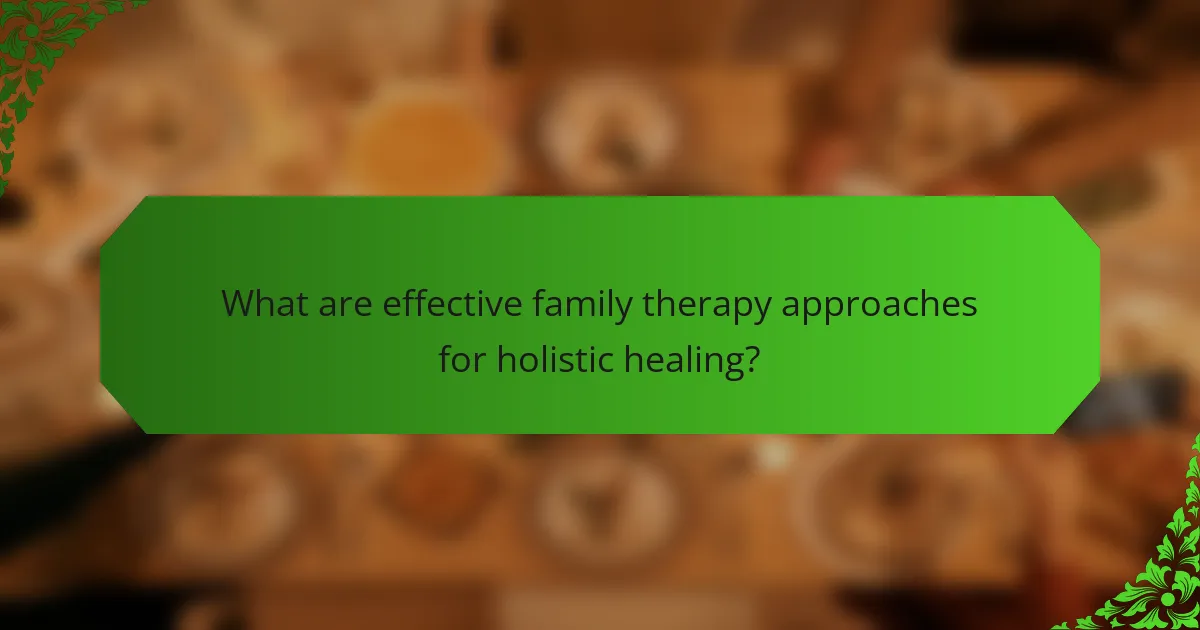
What are effective family therapy approaches for holistic healing?
Family therapy approaches for holistic healing focus on emotional resilience and strengthening family bonds. Effective methods include systemic therapy, which addresses family dynamics, and narrative therapy, which encourages members to share their stories. Cognitive behavioral therapy (CBT) helps in identifying and changing negative thought patterns, while art therapy fosters expression and connection. Mindfulness-based approaches enhance emotional regulation and reduce stress. Each method contributes uniquely to the overall goal of fostering healthier family relationships.
How does systemic family therapy contribute to emotional resilience?
Systemic family therapy enhances emotional resilience by fostering open communication, understanding family dynamics, and promoting supportive relationships. This approach addresses underlying issues, allowing families to develop coping strategies together. As a result, members experience increased emotional strength and adaptability. Engaging in this therapy cultivates a sense of belonging and collective problem-solving, which are vital for resilience. The unique attribute of systemic therapy lies in its focus on relational patterns rather than individual problems, leading to more profound healing and stronger family bonds.
What role does narrative therapy play in strengthening family bonds?
Narrative therapy enhances family bonds by allowing members to share their stories, fostering understanding and connection. This approach emphasizes the importance of personal narratives, enabling families to reframe their experiences positively. By exploring individual perspectives, families can identify shared values and goals, strengthening their emotional resilience. Additionally, narrative therapy encourages open communication, which can resolve conflicts and build trust among family members. This method not only promotes healing but also cultivates a supportive environment for growth and unity.
How can play therapy enhance communication among family members?
Play therapy enhances communication among family members by creating a safe space for expression. It allows children to articulate feelings and thoughts through play, which fosters understanding among family members. This approach builds emotional resilience as families learn to navigate conflicts and support each other. Additionally, play therapy encourages non-verbal communication, helping families connect on deeper emotional levels. As a result, families develop stronger bonds and improved relationships.
What are the key principles of solution-focused therapy for families?
Solution-focused therapy for families emphasizes strengths and solutions rather than problems. Key principles include identifying family goals, focusing on past successes, and fostering communication. This approach encourages families to envision their desired future and develop actionable steps toward achieving it. By highlighting positive interactions, families can build emotional resilience and strengthen their bonds.
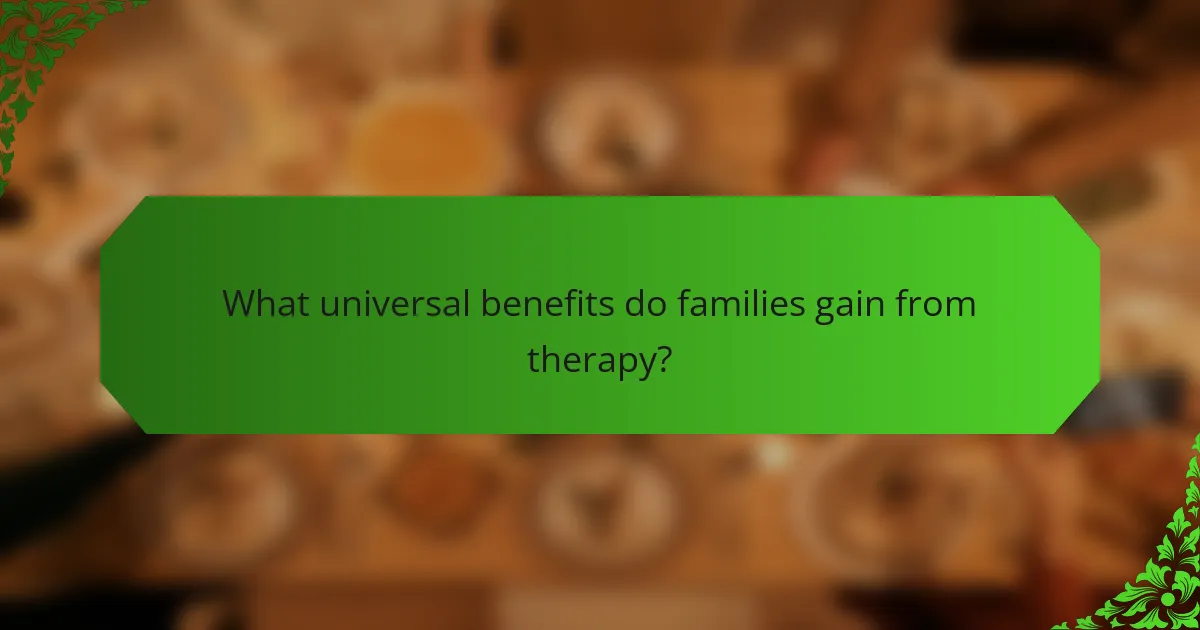
What universal benefits do families gain from therapy?
Families gain improved communication, emotional understanding, and conflict resolution skills from therapy. These universal benefits foster holistic healing and strengthen family bonds. Effective therapy approaches enhance emotional resilience, allowing families to navigate challenges together. As a result, families experience increased cohesion and support, leading to healthier relationships.
How does therapy improve emotional communication within families?
Therapy enhances emotional communication within families by fostering understanding and empathy. Family therapy provides a safe space for members to express feelings, leading to improved emotional resilience. Techniques such as active listening and conflict resolution are employed, allowing families to address underlying issues. As a result, stronger family bonds develop, promoting holistic healing and a more supportive environment.
What impact does family therapy have on conflict resolution?
Family therapy significantly enhances conflict resolution by fostering open communication and understanding among family members. This approach encourages individuals to express feelings, leading to greater emotional resilience. Effective techniques, such as active listening and role-playing, help families identify underlying issues and develop constructive solutions. Research indicates that families engaged in therapy experience improved relationships and reduced tension, resulting in stronger family bonds. The unique attribute of family therapy lies in its holistic approach, addressing not just conflicts but also emotional well-being and relational dynamics.
How can therapy foster a supportive family environment?
Therapy fosters a supportive family environment by enhancing communication, building emotional resilience, and promoting holistic healing. Effective family therapy approaches create safe spaces for open dialogue, allowing family members to express feelings and resolve conflicts. As a result, families develop stronger bonds and a deeper understanding of each other’s needs. Research shows that families engaged in therapy experience improved relationships and increased emotional support, vital for navigating challenges together.

What unique attributes distinguish various family therapy styles?
Different family therapy styles are distinguished by unique attributes such as focus, techniques, and goals. For instance, Structural Family Therapy emphasizes family dynamics and hierarchy, while Emotionally Focused Therapy centers on emotional bonding. Narrative Therapy encourages families to reframe their stories, promoting resilience. Each approach has distinct methods tailored to enhance communication and resolve conflicts, fostering stronger family bonds.
How does attachment-based therapy differ in its approach?
Attachment-based therapy focuses on understanding and improving emotional bonds within families. It differs from other family therapy approaches by emphasizing the role of attachment styles in shaping relationships. This method encourages open communication and fosters emotional safety, leading to greater resilience. Unlike traditional therapies that may prioritize behavioral changes, attachment-based therapy seeks to heal underlying emotional wounds. This unique attribute enhances family connections, promoting healthier interactions and stronger bonds.
What are the unique benefits of integrating art therapy in family sessions?
Integrating art therapy in family sessions enhances emotional expression, fosters communication, and strengthens bonds. This unique approach allows family members to explore feelings creatively, promoting healing and resilience. Art therapy can reduce anxiety and improve understanding among family members, making it easier to address conflicts. Moreover, it encourages collaboration, as families work together on artistic projects, reinforcing unity and support.
How does culturally sensitive therapy address specific family needs?
Culturally sensitive therapy effectively meets family needs by acknowledging diverse backgrounds. It fosters understanding, improves communication, and builds trust among family members. This approach tailors interventions to cultural values and beliefs, enhancing emotional resilience. For instance, incorporating family rituals can strengthen bonds and promote holistic healing.
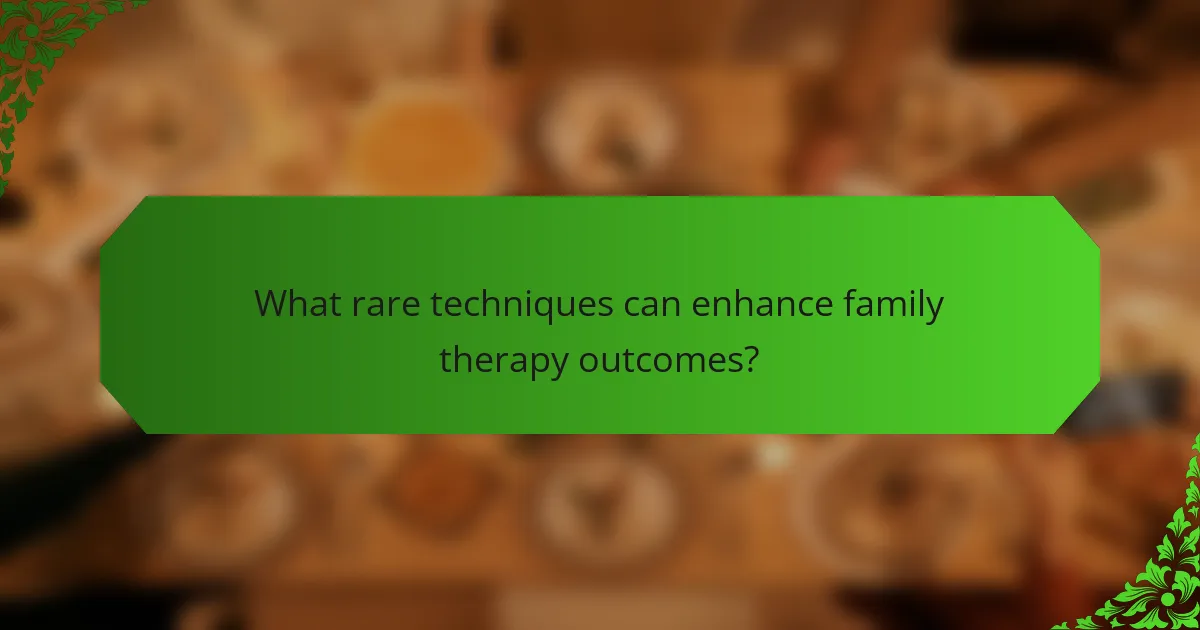
What rare techniques can enhance family therapy outcomes?
Integrating rare techniques such as narrative therapy, art therapy, and mindfulness practices can significantly enhance family therapy outcomes. Narrative therapy allows families to reshape their stories, fostering understanding and connection. Art therapy provides a creative outlet for emotions, promoting healing through expression. Mindfulness practices cultivate present-moment awareness, reducing stress and improving communication. These unique approaches facilitate deeper emotional resilience and strengthen family bonds.
How can equine-assisted therapy benefit family dynamics?
Equine-assisted therapy can enhance family dynamics by fostering communication, trust, and emotional healing. Interacting with horses encourages family members to express feelings openly, promoting understanding and empathy. This approach builds emotional resilience, as families learn to navigate challenges together. Research shows that equine therapy can significantly reduce anxiety and improve relational bonds, making it a unique and effective tool for holistic family therapy.
What are the advantages of using wilderness therapy for family bonding?
Wilderness therapy enhances family bonding by fostering communication, trust, and shared experiences. Families engage in challenging activities that promote teamwork and emotional connection. This immersive environment encourages vulnerability, leading to deeper understanding and empathy among family members. Studies show that participants often report improved relationships and emotional resilience post-therapy.
How does music therapy uniquely support emotional healing in families?
Music therapy uniquely supports emotional healing in families by fostering communication and connection. It encourages expression of feelings through creative outlets, enhancing emotional resilience. Families engage in collaborative activities, strengthening their bonds. Research indicates that music therapy can reduce anxiety and improve mood, contributing to a healthier family dynamic. These sessions create a safe space for vulnerability, allowing family members to process emotions together, leading to deeper understanding and support.
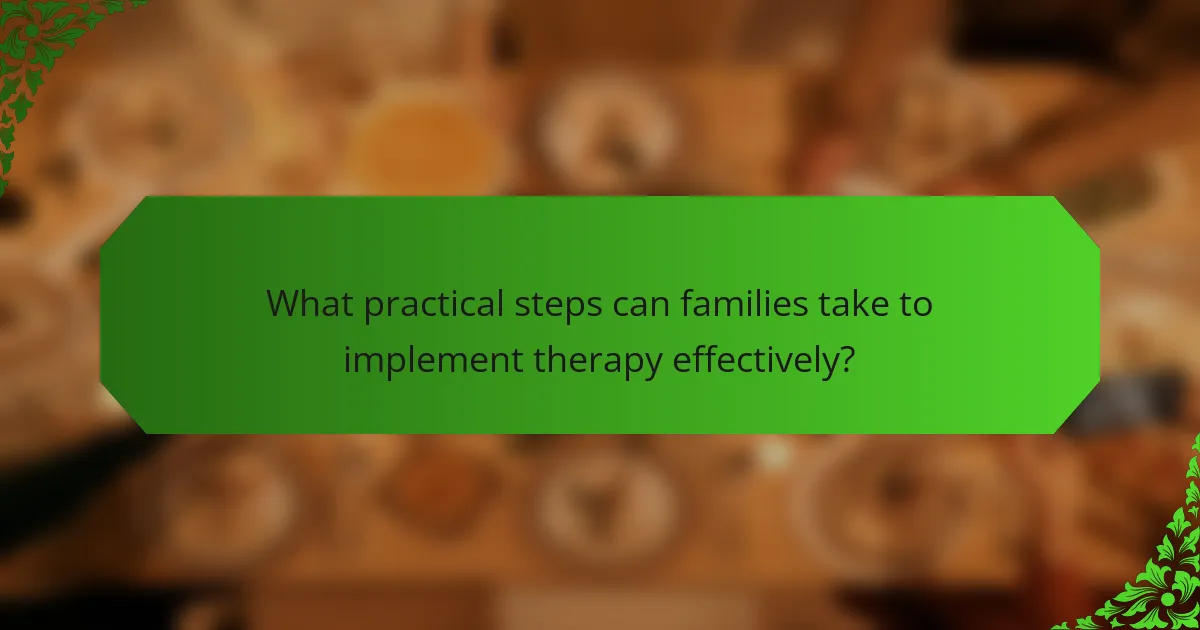
What practical steps can families take to implement therapy effectively?
Families can implement therapy effectively by establishing clear communication, setting specific goals, and actively participating in sessions. Regularly practicing skills learned in therapy at home reinforces progress.
1. Schedule regular family meetings to discuss feelings and challenges.
2. Create a safe space for open dialogue without judgment.
3. Set achievable goals together to track progress.
4. Encourage each family member to share their thoughts and experiences.
5. Reinforce therapy techniques through daily routines and activities.
6. Seek feedback from all members to adjust approaches as needed.
How can families choose the right therapist for their needs?
Families can choose the right therapist by assessing their specific needs and preferences. Start by identifying the issues to address, such as communication problems or emotional distress. Research therapists’ qualifications, focusing on their approach to family therapy, which can include systemic, narrative, or cognitive-behavioral methods. Consider the therapist’s experience with similar family dynamics, as this can enhance the therapy’s effectiveness. Schedule initial consultations to gauge compatibility and comfort levels. Finally, ensure the therapist’s availability aligns with your family’s schedule for consistent sessions.
What are common mistakes families make when starting therapy?
Families often make several common mistakes when starting therapy, which can hinder progress. One mistake is not setting clear goals, leading to vague sessions. Another is failing to communicate openly, which can result in misunderstandings. Additionally, families may underestimate the time commitment required, expecting quick fixes. Lastly, they might choose a therapist without considering compatibility, affecting the therapeutic relationship. Addressing these mistakes can enhance the effectiveness of family therapy.
What best practices should families follow during therapy sessions?
Families should prioritize open communication, active listening, and mutual respect during therapy sessions. Encouraging each member to express feelings fosters a supportive environment. Setting clear goals enhances focus and engagement. Consistency in attendance strengthens commitment to the process. Practicing empathy promotes understanding and connection among family members.
